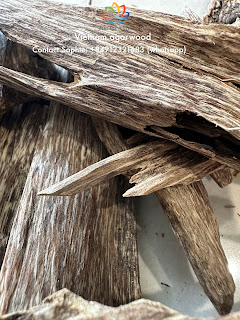1. Origin and Reputation
- Vietnam Agarwood:
- Primarily comes from Aquilaria crassna, a species known for producing exceptionally high-grade agarwood.
- Vietnamese agarwood, especially from the central region (e.g., Huế, Khánh Hòa), is highly prized for its unique fragrance, often described as sweet, warm, and sophisticated.
- It is considered the "gold standard" in the agarwood industry.
- Other Countries:
- Agarwood is also produced in countries like India, Cambodia, Thailand, Malaysia, Indonesia, and Laos. Each country has its own species of Aquilaria trees and produces agarwood with varying quality and scent profiles.
- Indian agarwood (from Assam) and Cambodian agarwood are also highly valued but differ in scent profile.
2. Scent Profile
- Vietnam Agarwood:
- The scent is typically complex, deep, and long-lasting.
- Vietnamese agarwood is known for its sweet, floral, and fruity notes with a hint of spice.
- It burns cleanly and produces a rich, pleasant smoke.
- Other Countries:
- Cambodian agarwood tends to have earthy and woody notes, often heavier and darker in aroma.
- Indian agarwood has a rich, warm, and slightly medicinal scent.
- Indonesian agarwood often has a more pungent or spicy aroma, reflecting the different species and environmental conditions.
3. Resin Content
- Vietnam Agarwood:
- Vietnamese agarwood often contains a higher resin content due to the favorable environmental conditions and the specific Aquilaria species.
- The higher resin content contributes to a more potent aroma and greater durability.
- Other Countries:
- Resin content varies depending on the species and environmental factors. For example, agarwood from Indonesia may have a lower resin content compared to Vietnam’s due to differences in cultivation and harvesting practices.
4. Aesthetic and Appearance
- Vietnam Agarwood:
- Typically darker in color due to higher resin concentration.
- The texture is often denser and more uniform.
- Other Countries:
- Agarwood from other regions may be lighter or less consistent in appearance, reflecting lower resin content or different species characteristics.
5. Price and Rarity
- Vietnam Agarwood:
- Vietnamese agarwood is among the most expensive due to its superior quality and high demand.
- Natural agarwood from Vietnam is increasingly rare due to overharvesting and stricter regulations.
- Other Countries:
- Agarwood from regions like Indonesia and Malaysia is often less expensive but still valued for different uses, such as incense or oils.
- Some regions may produce more cultivated or artificially inoculated agarwood, which tends to be less expensive.
6. Cultural and Religious Significance
- Vietnam Agarwood:
- In Vietnam, agarwood has deep cultural and spiritual significance, often used in traditional medicine, religious ceremonies, and luxury perfumery.
- Other Countries:
- Agarwood holds cultural importance in places like the Middle East (for perfumes) and South Asia (for rituals and incense), but the specific uses and preferences vary.
In summary, Vietnamese agarwood is distinguished by its exceptional fragrance, high resin content, and premium quality, making it a benchmark in the global agarwood market. However, agarwood from other countries has its own unique appeal, catering to different preferences and uses.














